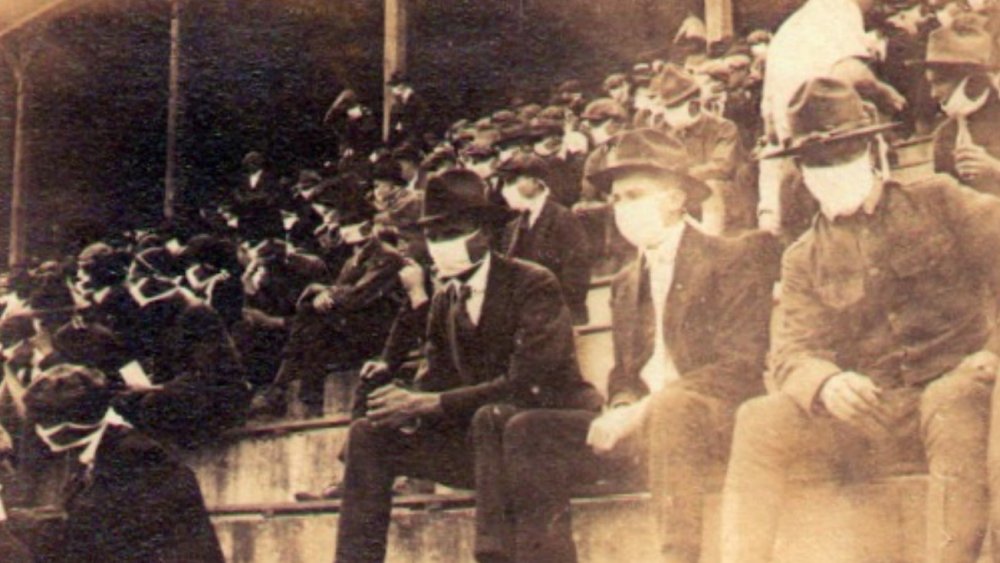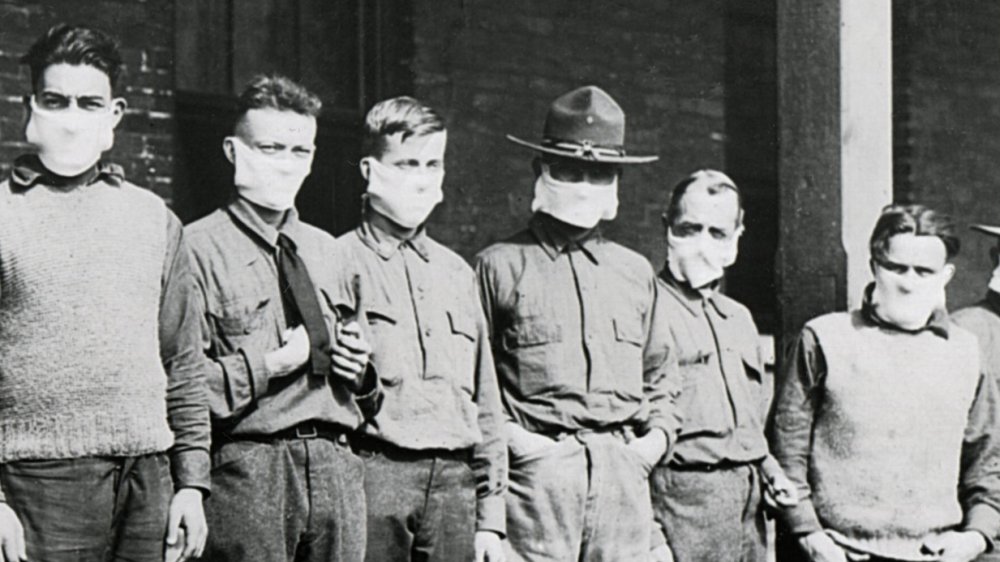What Sports Looked Like During The 1918 Pandemic
If there is ever an appropriate time for an athlete to take their ball and go home, it's when they're playing the game of life against a deadly pandemic. But when the 1918 flu ravaged humanity, it turned daily life into a-life-or-death struggle. And as the National Baseball Hall of Fame observes, "Baseball was not immune." Even the great Babe Ruth didn't call the shots when the flu came calling in 1918. According to Forbes, Ruth went from running bases to running a fever of 104 degrees. Purdue University history professor Randy Roberts said the Sultan of Swat "had the sweats." He ached and shivered. An attempt to treat him with silver nitrate nearly slayed the slugger. He went into convulsions and became gravely ill after receiving too much of the drug. It was rumored that Ruth was headed for the grave, but the Umpire Upstairs declared him safe in the end.
Boxing also took a significant hit. As the Guardian describes, boxing clubs closed across the U.S. for much of October, the most lethal month of 1918. Many boxers had the fight of their lives. Former heavyweight champion and famed "Great White Hope" Jim Jeffries — who had retired by that time — survived his bout with the flu, but other boxers sadly died. The pandemic's devastating effects spread across the sports world, leaving some with no choice but to throw in the towel.
The flu changed the face of sports into a facemask
Win or lose, athletes were forced to play by the flu's rules if they played at all. Per Sports Illustrated, many colleges delayed the start of their college football season. Georgia Tech only played a seven-game season, and 18 institutions reportedly canceled their seasons altogether. President Woodrow Wilson insisted that football would boost national morale, so various military posts formed teams to compete against college players.
Athletes and fans alike took a huge risk during competitions so they often wore masks. Sports Illustrated notes that in some locations, like Pasadena, California, people were legally required to wear masks under penalty of arrest. And that penalty was enforced. So every member of a baseball team wore masks. Even so, the flu cut the MLB season short in 1918 and claimed various lives, including that of celebrated umpire Silk O'Loughlin, according to the National Baseball Hall of Fame.
Unfortunately, flus don't care about calendars, and the 1918 pandemic put hockey on ice in 1919. As the Associated Press details, the 1919 Stanley Cup series the Montreal Canadiens and the Seattle Metropolitans was cancelled shortly before the deciding game after members of both teams became grievously ill. Montreal only had three healthy players left, and defensemen Joe Hall tragically died four days after the series was cancelled.

